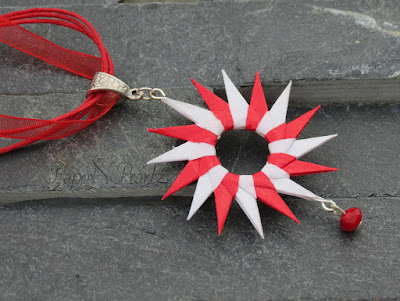A very cute mouse folded from a square. It is not very difficult to fold and works well with origami paper, 6 inch square.
I like these little guys, they are about 3 inches in size, excluding the tail.
This is the second model I am folding from the book 'Origami - 30 Fold-by-Fold Projects'. The other one I have folded was Francis Ow's Double Hearts. So far I have found the models fairly easy to fold. Hopefully I will try out a few more in the days to come. Specifically the elephant!
Model Details:
Model: Mouse
Creator: Eduardo Clemente
Book: Origami - 30 Fold-by-fold Projects
Author: Paulo Mulatinho
Difficulty Level: Low Intermediate
Paper Ratio: Square
Paper Size: 6 inches
Tutorial: Youtube


















